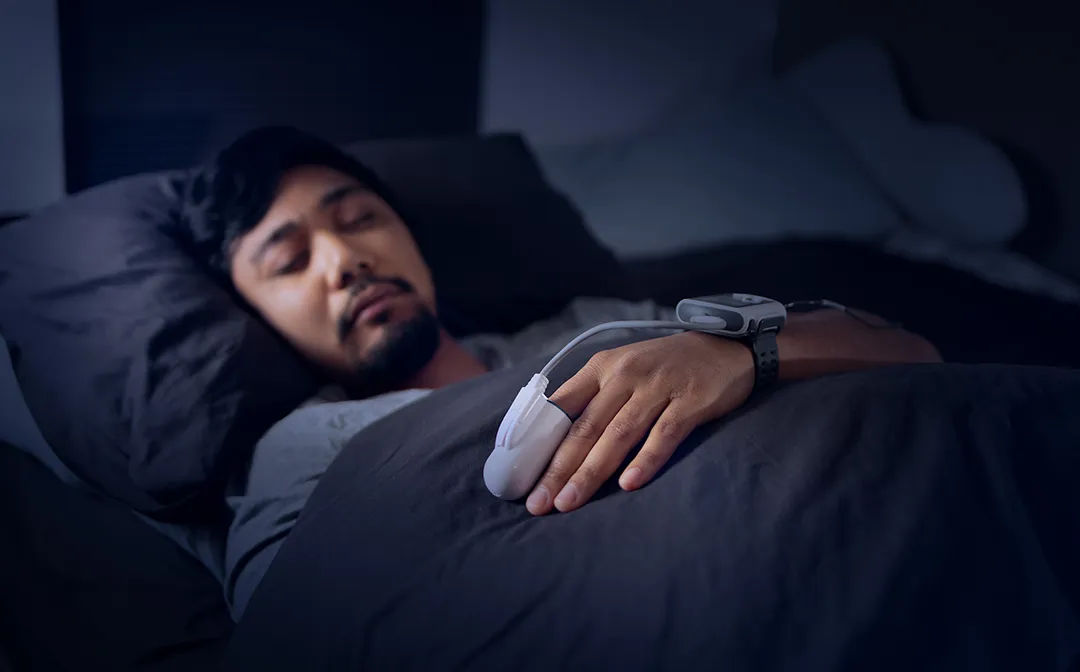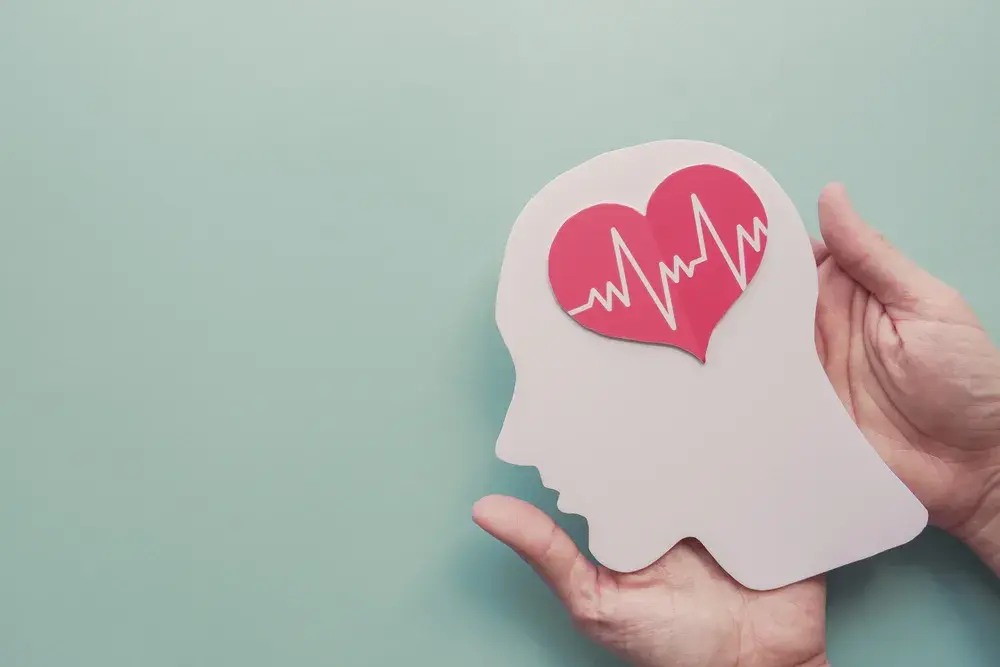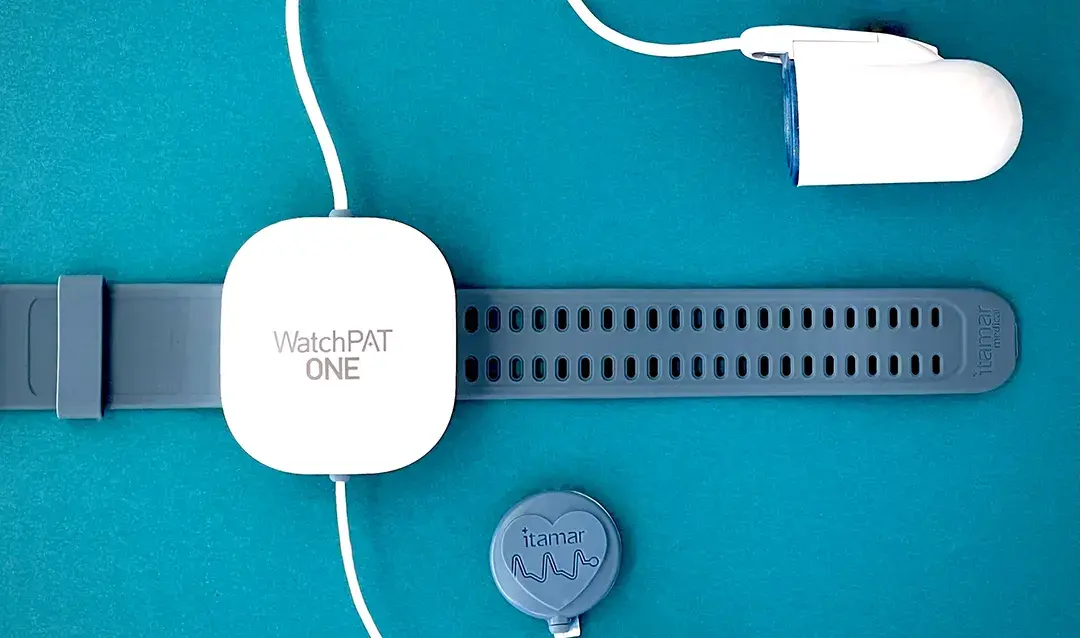What is Sleep Apnea?
This common sleep disorder is more dangerous than you might think

Obstructive sleep apnea (OSA) is a sleep disorder that causes you to stop breathing while asleep. The muscles surrounding your windpipe block your airway, preventing you from getting enough oxygen. As a survival mechanism, your brain automatically wakes you up just enough so that you start breathing again. This cycle repeats frequently throughout the night, preventing you from getting the rest you need, disturbing your natural sleep rhythm, and leaving you vulnerable to a host of health issues, including heart disease1 and dementia2.
Related: What happens to your body during an apneic event?
Symptoms of Sleep Apnea
OSA can manifest in a lot of different ways, and some symptoms are easier to spot than others. People with sleep apnea are frequently unaware that they might have a sleep disorder at all — instead, their partners are often the first to recognize that something is wrong. Here are some of the most common sleep apnea symptoms to watch out for.
1. Loud, chronic snoring
Snoring is probably the most recognizable symptom of sleep apnea. You may be unaware that you snore or feel that it doesn’t bother you — although if you share your bed with a partner, it might wake them up at night. Snoring is closely associated with sleep apnea, but people who don’t snore at all can have sleep apnea, too.
2. Gasping for air
If you have a partner, this is often the most frightening sleep apnea symptom. It looks and sounds like you’re suffocating, and can cause them to anxiously wait up for you to start breathing again. This symptom occurs when your body recognizes it isn’t getting enough oxygen, so your brain wakes you up, causing you to start breathing again.
3. Daytime fatigue and difficulty concentrating
Feeling excessively tired during the day, especially in the morning, is a common symptom of sleep apnea. The lack of quality sleep can also lead to problems with focus and memory, which can negatively impact your ability to perform basic tasks like driving a car3.
4. Anxiety and mood changes
Increased anxiety, depression, or shifts in mood can be a symptom of sleep apnea that you might not immediately associate with interrupted sleep. It can happen to people of all genders but is most common in female patients.
Learn More: How does sleep apnea impact mental health?
5. Sexual dysfunction
Sleep apnea may cause erectile dysfunction and decreased sex drive in male patients, and may also cause decreased sex drive in female patients.
6. Morning headaches
Some sleep apnea sufferers may experience pressure headaches that can last several hours. They typically occur within a few hours of waking up and go away later in the day.
Related: What does a sleep apnea headache feel like?
7. Waking up with a dry mouth or sore throat
If you often wake up feeling parched or with a scratchy throat, that can be a result of breathing through your mouth instead of your nose. This is sometimes a sign of sleep apnea.
Understanding these symptoms can be vital for identifying sleep apnea early. The sooner you get a diagnosis, the faster you can receive treatment, which will reduce the risk of health complications like heart disease and improve your overall quality of life.
Who Can Have Sleep Apnea?
Anyone can have sleep apnea, from infants to elderly people. However, there are several contributing factors⁴ that can increase your risk of OSA. Here's a closer look:
1. Genetics, Race, and Ethnicity
Genetics play a significant role. If you have family members with sleep apnea, you may be more likely to develop the condition. Relatedly, OSA is more frequently diagnosed⁵ in Black, Native American, and Hispanic patients than in other ethnic groups.
2. Physical Traits
Certain physical traits, such as having a narrow airway, enlarged tonsils, or chronic nasal congestion, can increase your risk of developing sleep apnea. Excess weight, particularly around the neck, can put pressure on the airway, leading to OSA. However, not all individuals with sleep apnea are overweight, and not all overweight individuals develop sleep apnea.
3. Lifestyle
Smoking can increase inflammation and fluid retention in the airway, contributing to sleep apnea. Overuse of alcohol and sedatives, especially opioid pain medication, can relax the muscles in your throat, leading to a higher risk of airway obstruction.
4. Sleep Position
Sleeping on your back may cause your tongue and soft palate to rest against the back of your throat, blocking your airway. People who have sleep apnea should try to sleep on their side as much as possible.
5. Diabetes, Hypertension, and Heart Disorders
The relationship between these conditions and sleep apnea is complex and may be “bidirectional,” which means that if you have diabetes, hypertension, or a heart disorder, sleep apnea might have helped cause it or might be making it worse — and if you have sleep apnea but haven’t been diagnosed with one of these conditions, you might be at a higher risk for developing one or more of them, too.
Related: Can sleep apnea cause high blood pressure?
Diagnosis and Treatment of Sleep Apnea
To diagnose sleep apnea, you’ll need to start with a sleep study, which monitors your breathing and other body functions during sleep, providing essential insights into your sleep patterns. In the past, these studies were conducted in a laboratory setting, but in recent years, technology has developed significantly, and we can now produce extremely accurate results from home sleep tests⁶.
Once diagnosed, your sleep apnea treatment should be tailored to fit your specific needs. For many, an easy measure like an oral appliance, prescribed by a sleep dentist, is often enough. These appliances prevent your tongue from falling back in your throat so it doesn’t block your windpipe. Others might benefit from continuous positive airway pressure (CPAP) therapy, which involves wearing a mask while you sleep that delivers a constant flow of air to keep your airway open.
Learn More: Sleep Apnea Treatment Options Explained
Health Impacts of Sleep Apnea
Untreated sleep apnea can lead to a wide range of health problems⁷. It can cause daytime fatigue, morning headaches, and irritability due to disrupted sleep. These might seem like minor inconveniences, but they can significantly impact your daily life in pretty significant ways, including your work performance, relationships, and ability to drive safely⁸.
Sleep apnea can also lead to serious health conditions. The sudden drops in blood oxygen levels that occur during sleep apnea episodes can lead to high blood pressure and heart problems⁹. It can also increase the risk of type-2 diabetes¹⁰ and metabolic syndrome. Importantly, recent studies have shown that severe sleep apnea can negatively impact brain health¹¹, leading to issues with memory, cognition, and the nervous system.
What To Do Next
Sleep apnea is more than “just snoring.” It’s not a nuisance; it's a wake-up call and an opportunity to take control of your health. Studies show that treatment can actually reverse damage¹² caused by sleep apnea, and while it’s always better to address it sooner than later, it’s never too late to get treated and start getting the quality sleep your body needs.
Ready to take action? Take our free sleep assessment to evaluate your symptoms. It's a quick check and can help you decide your next move. If the quiz raises concerns or you’re feeling sure you want to get tested, a home sleep test is your next step. It's a reliable tool that helps determine what's happening with your sleep from the comfort of your own bed.
Sánchez-de-la-Torre M, Campos-Rodriguez F, Barbé F. Obstructive sleep apnoea and cardiovascular disease. Lancet Respir Med. 2013;1(1):61-72. doi:10.1016/S2213-2600(12)70051-6
Baril AA, Carrier J, Lafrenière A, et al. Biomarkers of dementia in obstructive sleep apnea. Sleep Med Rev. 2018;42:139-148. doi:10.1016/j.smrv.2018.08.001
Jordan AS, McSharry DG, Malhotra A. Adult obstructive sleep apnoea. Lancet. 2014;383(9918):736-747. doi:10.1016/S0140-6736(13)60734-5
Cumpston E, Chen P. Sleep Apnea Syndrome. [Updated 2023 Jul 18]. In: StatPearls [Internet]. Treasure Island (FL): StatPearls Publishing; 2023 Jan-.
Dudley KA, Patel SR. Disparities and genetic risk factors in obstructive sleep apnea. Sleep Med. 2016;18:96-102. doi:10.1016/j.sleep.2015.01.015
Zancanella E, do Prado LF, de Carvalho LB, Machado Júnior AJ, Crespo AN, do Prado GF. Home sleep apnea testing: an accuracy study. Sleep Breath. 2022;26(1):117-123. doi:10.1007/s11325-021-02372-6
Purtle MW, Renner CH, McCann DA, Mallen JC, Spilman SK, Sahr SM. Driving with undiagnosed obstructive sleep apnea (OSA): High prevalence of OSA risk in drivers who experienced a motor vehicle crash. Traffic Inj Prev. 2020;21(1):38-41. doi:10.1080/15389588.2019.1709175
Mitra AK, Bhuiyan AR, Jones EA. Association and Risk Factors for Obstructive Sleep Apnea and Cardiovascular Diseases: A Systematic Review. Diseases. 2021;9(4):88. Published 2021 Dec 2. doi:10.3390/diseases9040088
Huang T, Lin BM, Stampfer MJ, Tworoger SS, Hu FB, Redline S. A Population-Based Study of the Bidirectional Association Between Obstructive Sleep Apnea and Type 2 Diabetes in Three Prospective U.S. Cohorts. Diabetes Care. 2018;41(10):2111-2119. doi:10.2337/dc18-0675
Bubu OM, Andrade AG, Umasabor-Bubu OQ, et al. Obstructive sleep apnea, cognition and Alzheimer's disease: A systematic review integrating three decades of multidisciplinary research. Sleep Med Rev. 2020;50:101250. doi:10.1016/j.smrv.2019.101250
Li P, Shu Y, Liu X, et al. The Effects of CPAP Treatment on Resting-State Network Centrality in Obstructive Sleep Apnea Patients. Front Neurol. 2022;13:801121. Published 2022 Mar 28. doi:10.3389/fneur.2022.801121




